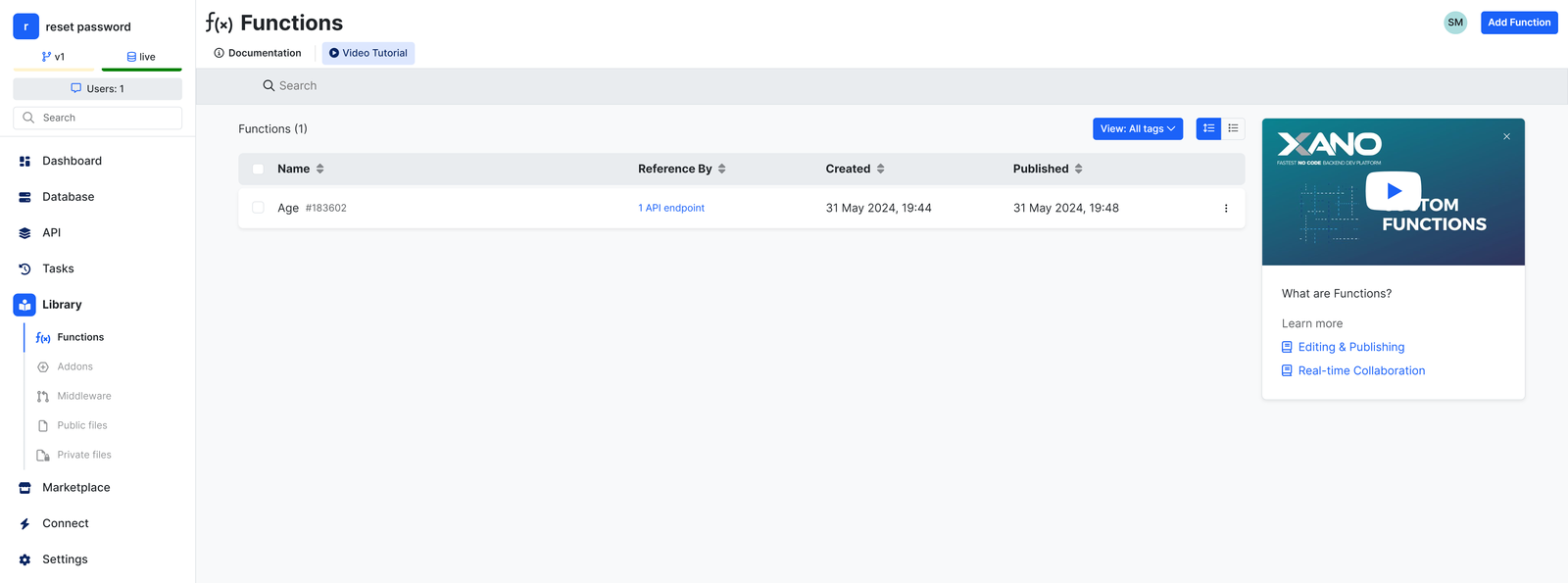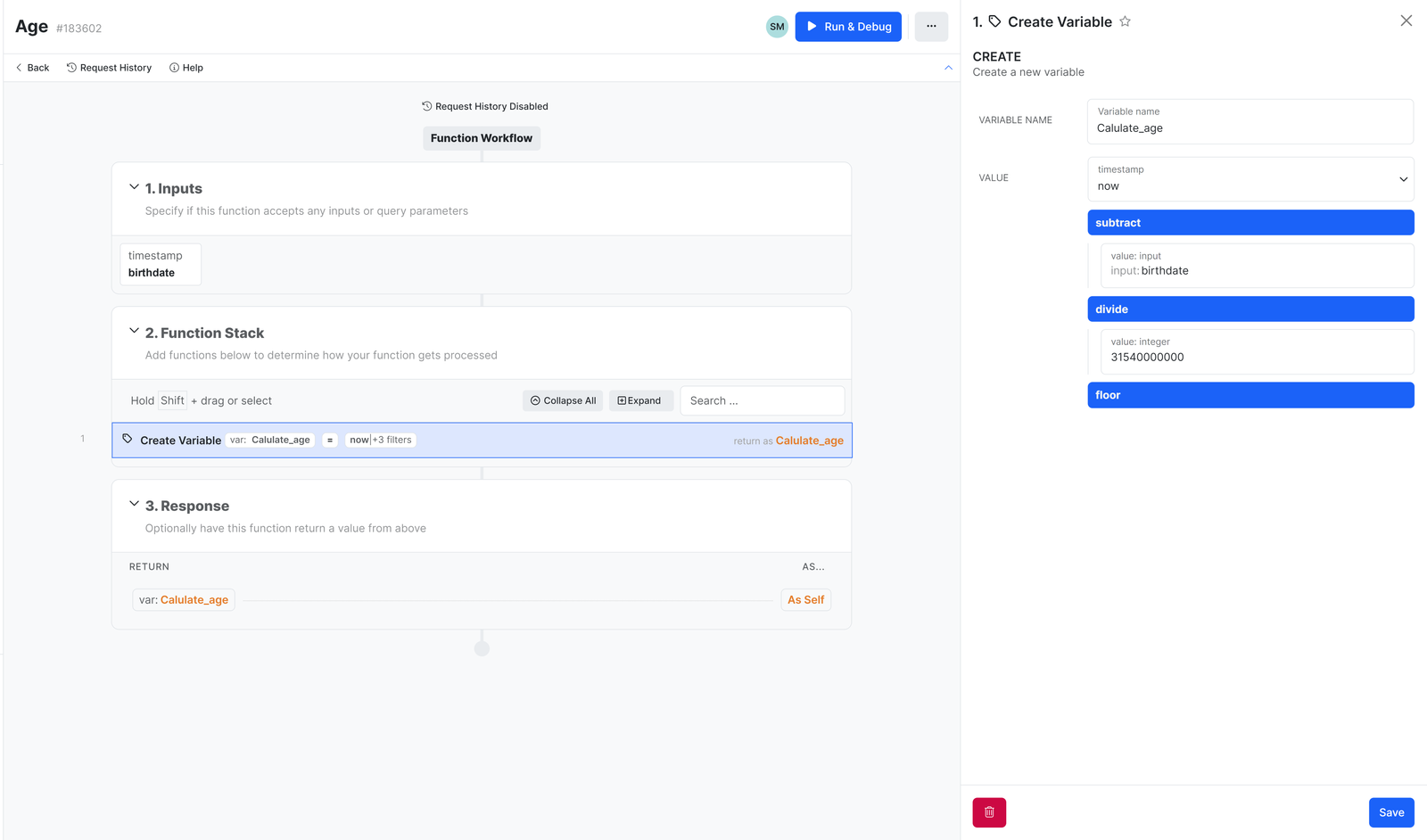
Introduction :
What are Xano Functions ?
1. Functions

- Go to the Library section in Xano.
- Under the Library section, find the Functions tab.
- To create a new function, press the Add Function button.
2. Inside the Functions tab

Inside the Functions tab, you will notice that the interface closely resembles the API Inner section. This means you’ll see similar layouts and functionalities such as a list of existing functions, options to edit or delete functions, and various tools for managing and organizing your functions.
In the above image, I am creating a custom function that will be used to calculate the age of the user.
First, in the Input section, I have created a timestep input called birthdate. This input will capture the birthdate of the user, which will be used in the function to calculate the age.
3. Logic inside function stack

- First, in the Function Stack, I select the Create a Variable step.
- Inside this step, I first change the name of my variable to Calculate_age.
- In the Value field, I pass the timestep.
- I then apply a series of filters to this value :
- Filter 1: Subtract - In this filter, I pass my birthdate input.
- Filter 2: Divide - In this filter, I pass 31540000000 (which is the approximate number of milliseconds in a year).
- Filter 3: Floor - This filter rounds down the result to the nearest whole number, giving the user's age in years.
- Then, in the Response section, I pass the Calculate_age variable to include it in the function's output. This ensures that the calculated age is returned as part of the function's response.
4. Use Functions in API

- First, you have to add a new step in the API function stack.
- When you add a new step, a sidebar appears on the right side of the screen.
- In this sidebar, you can see various options, including Custom Functions.
- Select Custom Functions to proceed with adding your custom function to the API function stack.

Now, in the Custom Function stack, you need to pass the user birthdate input. This input will be used within the custom function to perform calculations or other operations based on the user’s birthdate.
First, ensure that you have completed setting up your API with the custom function to calculate the user’s age based on their birthdate.
Now, if you run the API and pass the user ID as a parameter, it will trigger the custom function to calculate the user’s current age.
The API will then process the user’s birthdate, calculate their age using the custom function, and return the current age as a response.
This response will display the user’s current age, providing valuable information based on the user’s ID.
Conclusion
- Flexibility: Xano's functions allow you to perform complex operations and calculations, transforming data as needed before returning it through your APIs.
- Customization: With functions, you can create custom logic tailored to your specific application needs, whether it's data manipulation, validation, or integration with external services.
- Integration: Functions seamlessly integrate with other parts of your Xano project, such as API endpoints and database operations, enabling a cohesive development experience.
- Ease of Use: Xano provides an intuitive interface for creating and managing functions, making it accessible to both beginner and experienced developers.
- Scalability: As your project grows, functions in Xano can scale with your needs, allowing you to build increasingly complex and robust applications without sacrificing performance.
Share Article:


